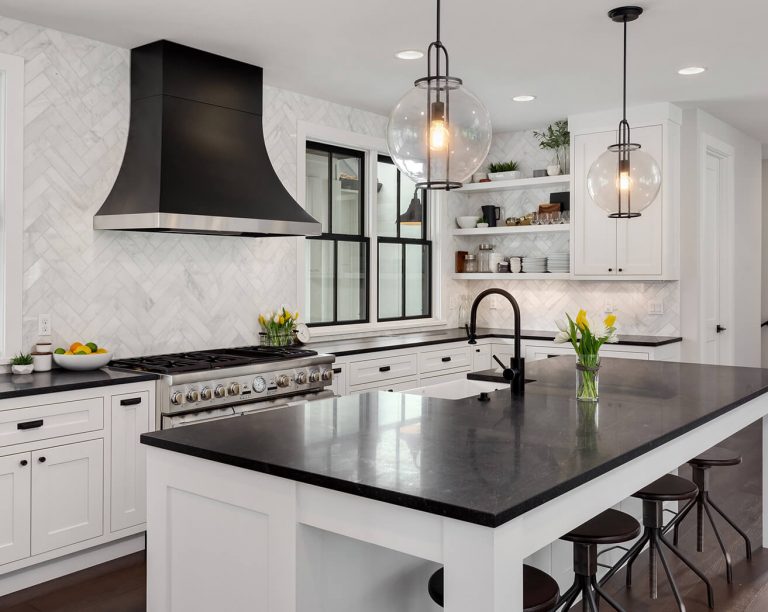What are the benefits and drawbacks of expanding or purchasing new?
Consider these factors before deciding whether to buy a bigger house or add on to an existing one:
- How much money is available to remodel your current home, either through cash reserves or a home renovation loan?
- How much more room is necessary? Does the lot have room to grow on the ground level or might a second floor be supported by the foundation?
- What do local building and zoning regulations permit?
- How much equity does the house already have?
- Are there any reasonably priced homes available to purchase that would meet your changing housing needs?

Do we spend a lot of money on a dream house or do we opt for a beginning home?
It can be difficult to decide between a new home, an older, larger house in a more working-class neighborhood, or a smaller house in a wealthy district.
If this is the case, consider your priorities and answer the following questions:
- Is the home itself more important to consider, or is the area around it?
- Are the neighbors all secure?
- Is the standard of the schools a problem?
- Which of the neighborhoods seems to draw more inhabitants who are families with children or older adults? Where do you fit in, then?
In terms of the return on your investment, home price growth is difficult to forecast. The price of move-up homes skyrocketed in the late 1980s and again ten years later. Smaller homes, however,
typically held their value better than more expensive ones throughout the recession that followed.
How do you decide whether to buy or rent?
Owning a house gives you the opportunity to make decisions regarding your space as well as tax advantages. Renters benefit from not having to worry about upkeep and other costs related to property
ownership. A variety of economic factors are also present. In contrast to renters, homeowners who obtain a fixed-rate loan may fix their monthly housing expenditures and make wise investment decisions
because they know these costs won't increase significantly. Owning a home is a highly leveraged investment that can generate significant returns on a little initial outlay. Such gains, however, are
reliant on property price growth.
Mitchell A. Levy states in his book "Home Ownership: The American Myth," published by Myth Breakers Press in Cupertino, California, in 1993, "For some people, having a home is a terrific experience.
"However, there is a cost. In addition to the hassle of upkeep, Levy adds, "the amount of after-tax money given to the lender is typically more than the amount of money paid in rent otherwise.
In their book "The Buy & Hold Real Estate Strategy," published by John Wiley & Sons in 1992, David T. Schumacher and Erik Page Bucy claim that "excellent property located in growth areas should be
seen as an investment as opposed to a speculation or gamble." The authors advise potential purchasers to research a community for a few months before making a purchase. A common error is buying in
the incorrect location. The authors state that "just because particular features are expensive doesn't necessarily indicate they have some intrinsic advantage." "One property may be more expensive
than another right now, but will it continue to be more valuable in the future?"

How can I get the truth about the houses I'm interested in?
The agent's expertise, seller disclosure requirements, and home inspections will be helpful. States have different disclosure requirements, but in certain of them, the seller must fill out a real
estate transfer disclosure statement. The following is a list of what you might see in a disclosure form:
- A stove, oven, microwave, dishwasher, garbage disposal, and trash compactor are in the kitchen.
- Fire and burglar alarms, smoke detectors, sprinklers, a security gate, window screens, and an intercom are examples of safety measures.
- The presence of a sump pump, automatic garage door openers, rain gutters, TV antennas, or satellite dishes.
- Amenities like fireplaces, a built-in barbecue, a patio or deck, or a pool or spa.
- The kind of heating, the state of the electrical wiring, the gas supply, and the presence of any external power sources, like solar panels.
- It's also advisable to disclose the kind of water heater, water supply, sewer system, and septic tank used.
Additionally, sellers must disclose any severe flaws or breakdowns in the main systems of the house. The external and interior walls, roof, insulation, windows, fences, driveways, walkways, floors,
doors, foundation, and plumbing and electrical systems are all listed on the checklist. In addition, the form requests that sellers list any environmental dangers, shared walls or fences with neighboring
property owners, encroachments or easements, room additions or repairs made without the required permits or in violation of building codes, zoning violations, citations against the property, and lawsuits
brought against the seller that may have an impact on the property.
Additionally, keep an eye out for or inquire about any settling, sliding, or soil issues, as well as any drainage or flooding issues and any significant earthquake, flood, or landslide damage.
Condominium buyers must be made aware of any covenants, ordinances, and restrictions or other deed restrictions. It's vital to highlight that the straightforward notion of exposing flaws has grown
considerably in recent years. Many governments, as well as brokers and agents, have their own required disclosure forms. Additionally, the house warranty and inspection sectors have expanded.
What do the real estate abbreviations in the advertisements mean?
Don't be concerned if you come across strange acronyms in a real estate listing. There is a method to this shorthand's apparent craziness (which is mostly adopted by sellers to save money in advertising
charges). From a recent newspaper's classified section, these acronyms and their definitions are shown below:
- assum. fin. — assumable financing
- dk — deck
- gar — garage (garden is usually abbreviated “gard”)
- expansion pot’l — may be extra space on the lot, or possibly vertical potential for a top floor or room addition. Verify actual potential by checking local zoning restrictions prior to purchase.
- fab pentrm — fabulous pentroom, a room on top, underneath the roof, that sometimes has views
- FDR — formal dining room (not the former president)
- frplc, fplc, FP — fireplace
- grmet kit — gourmet kitchen
- HDW, HWF, Hdwd — hardwood floors
- hi ceils — high ceilings
- In-law potential — potential for a separate apartment. Sometimes, local zoning codes restrict rentals of such units so be sure the conversion is legal first.
- large E-2 plan — this is one of several floor plans available in a specific building
- lsd pkg. — leased parking area, may come with an additional cost
- lo dues — find out just how low these homeowner’s dues are, and in comparison to what?
- nr bst schls — near the best schools
- pvt — private
- pwdr rm — powder room, or half-bath
- upr- upper floor
- vw, vu, vws, vus — view(s)
- Wow! — better check this one out